Prevalence in seafood
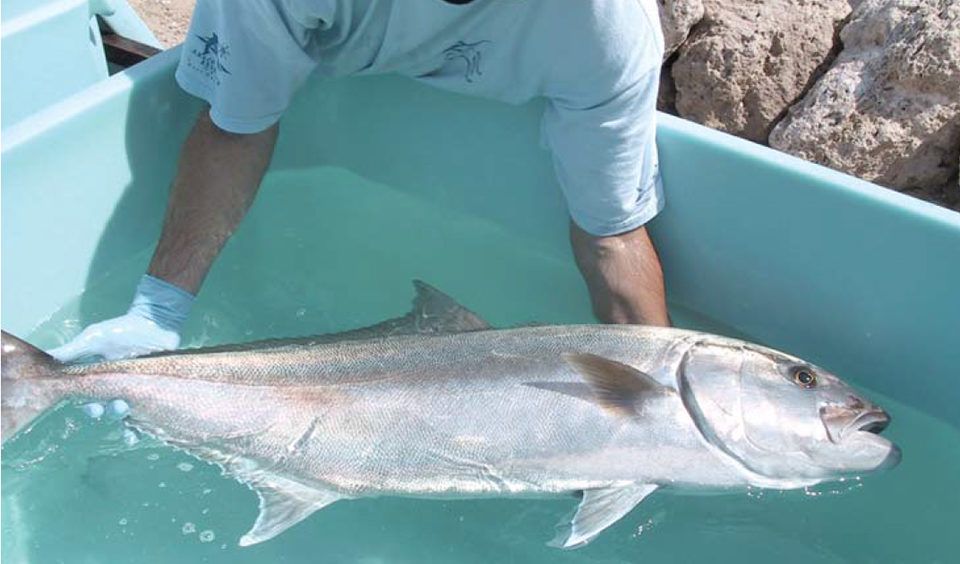
Biogenic amines from fish and shellfish are among the foremost causes of seafood-related morbidity worldwide. Seafood harvesters and processors should be keenly aware of the conditions that exacerbate the formation of these compounds in their products, the tendency of different areas of a fish carcass to support formation of these amines, and the effects of bacterial flora on the formation of these toxins.
Biogenic amines in fish
The prevalence of biogenic amines in fish depends on several factors. In general, concentrations in newly caught fish are low. For example, research found cadaverine values ranged 1.16 to 10.36 ppm in high-quality rockfish, salmon steaks, and shrimp, and putrescine levels ranged 1.36 to 6.30 ppm in high-quality lobster tails, salmon steaks, and shrimp. Another study reported that high-quality tuna had cadaverine and putrescine values ranging 0.24 to 5.32 and 0 to 1.84 ppm, respectively.
Biogenic amine prevalence also varies year to year. For example, a three-year study focused on biogenic amines in 102 samples of albacore tuna harvested off the northwest U.S. coast from 1994 to 1996. There were significant differences of amine levels in these fish depending on the year.
Total levels of spermine, spermidine, putrescine, cadaverine, histamine, and tyramine varied 5.9 to 56.5 ppm. These levels were probably lower due to the fact that the samples were frozen on board or chilled on board and immediately frozen after reaching the dock and kept at minus-40 degrees-C until analysis. Spermine was present at higher levels, followed by spermidine, histamine, putrescine, cadaverine, and tyramine.
Muscle type
Researchers have observed no difference in amine levels in upper and lower loin light muscles. However, dark muscles contained higher concentrations of spermidine (Table 1). Samples from intestine walls contained high amine levels.
One particularly broad study examined the amounts of histidine and histamine formed in 21 aquatic species during spoilage. The conclusions were consistent with those of other researchers: more histamine is produced in the red muscle fishes, such as tuna and mackerel, than in white muscle species such as rockfish.

Microflora
A variety of microorganisms is able to produce biogenic amines. The production of cadaverine and putrescine is not surprising, since studies have shown that the covalent linking of cadaverine and putrescine to peptidoglycan is necessary for normal microbial growth. As such, production of these amines supports the continued expansion of microbial colonies on the surface of fish.
Several inoculation studies on both culture media and fish have shown that the microorganisms Morganella sp., Proteus morganii, Proteus sp., Hafnia alvei, and Klebsiella sp. can produce histamines and other biogenic amines. The majority of the studies also concurred that the potential of these microorganisms to produce toxic levels of biogenic amines is potentiated at abusive temperatures.
Tables 2 and 3, which summarize research on biogenic amines, show study results on the production of biogenic amines by bacterial isolates inoculated on different culture media and fish likely to be cold smoked, respectively. In addition, data from studies where isolates from fish were incubated and histamine production monitored are shown in Table 4.
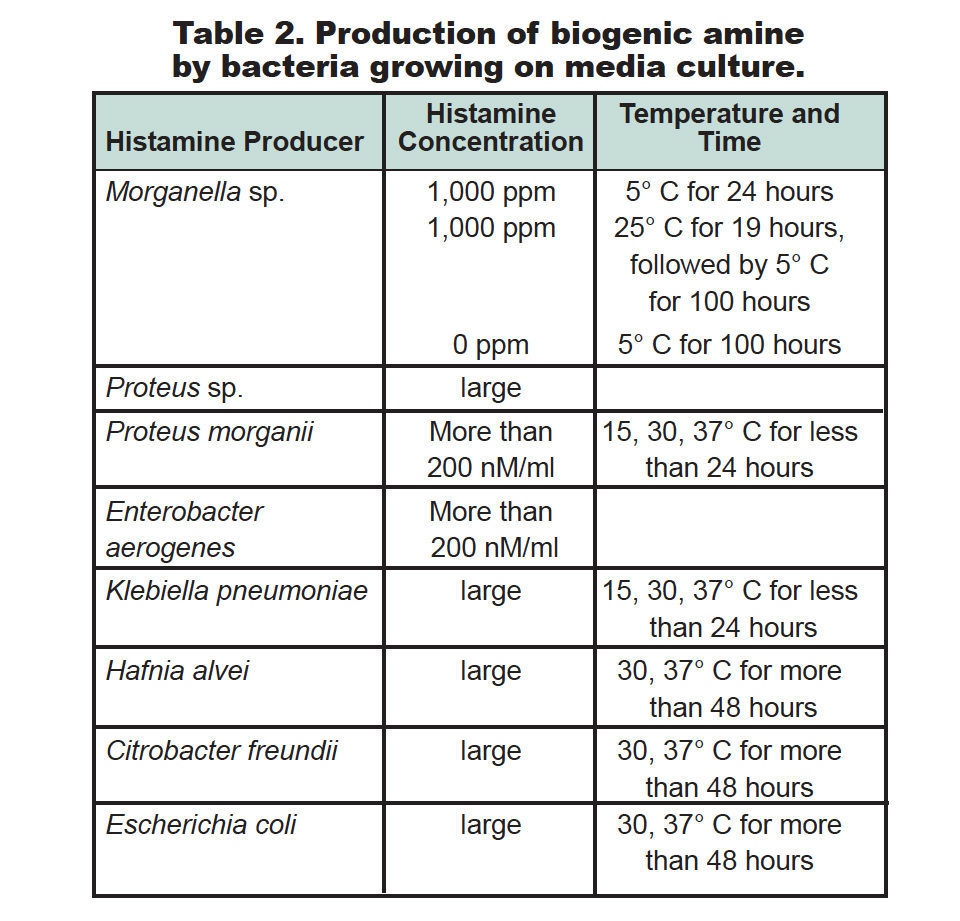
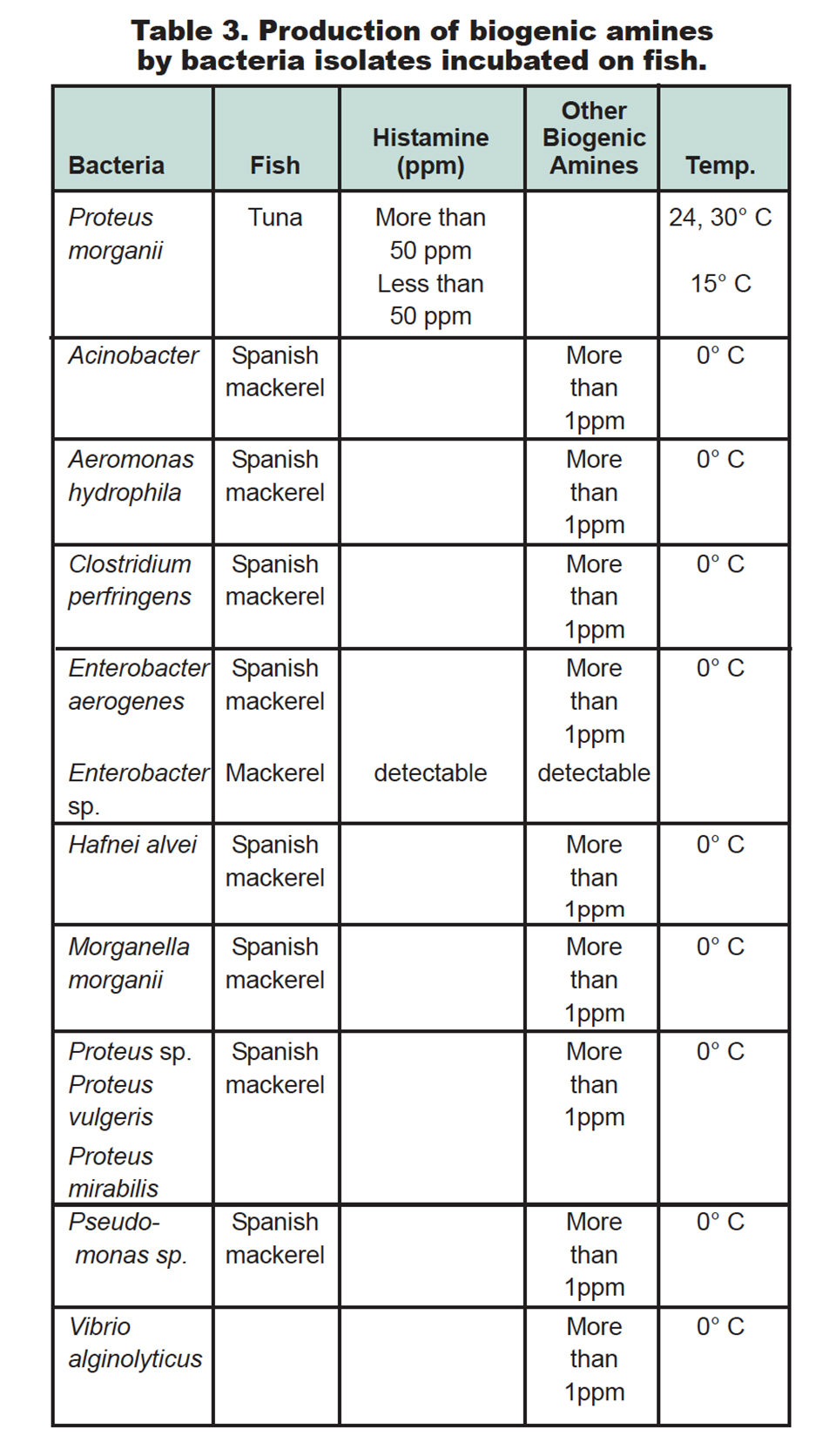
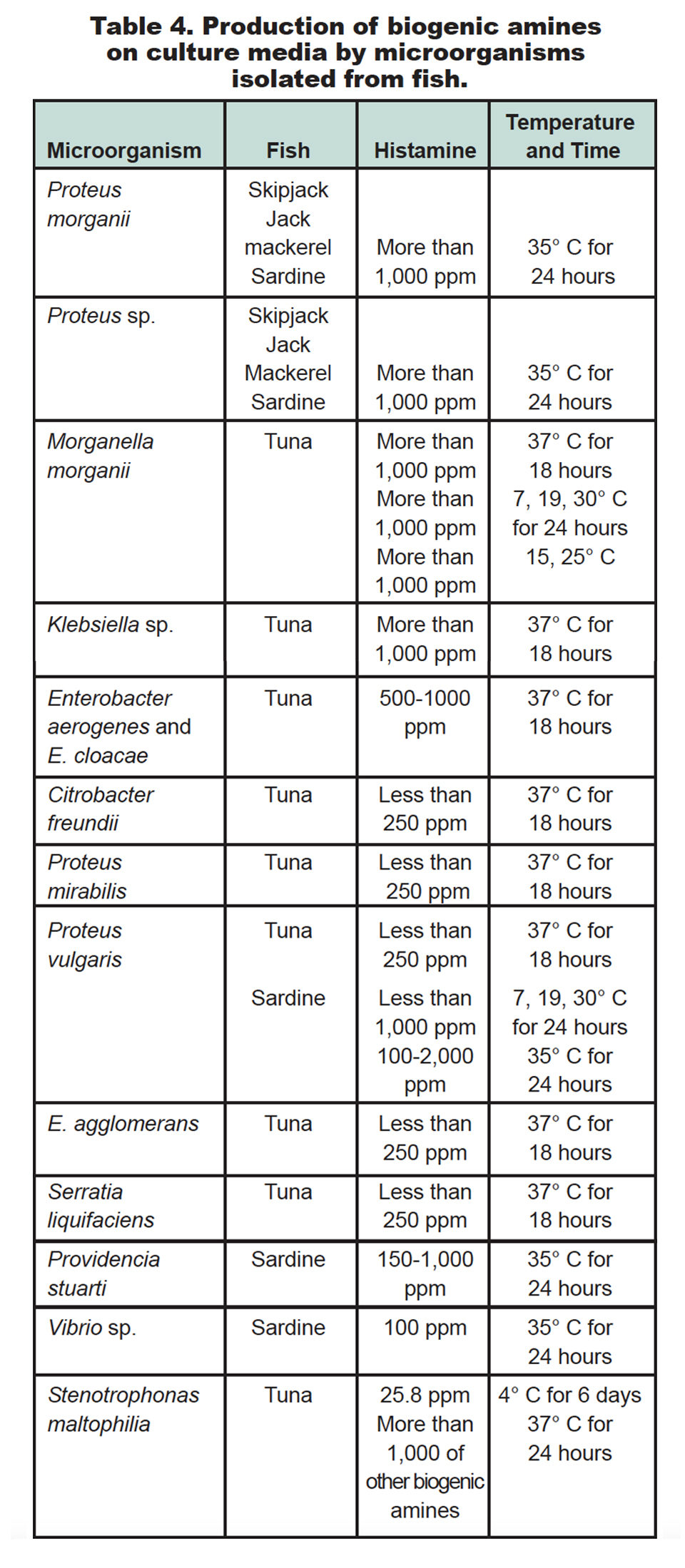
Similarly, when the relationship between microflora on horse mackerel and dominant spoilage bacteria was investigated, results showed that Pseudomonas I/II, Pseudomonas III/IV-NH, Vibrio, and Photobacterium were dominant when high levels of putrescine, cadaverine, and histamine were detected.
The activity of decarboxylase enzymes produced by bacteria can be an indirect measurement of potential for biogenic amine formation. A study showed that 14 bacterial isolates from mackerel tissue were capable of exhibiting decarboxylase activity (production of histamine, cadaverine, and putrescine) when incubated in Spanish mackerel at 0, 15 and 30 degrees-C. Many other bacteria also have strong histidine decarboxylase activities.
Best practices required
Since many microorganisms can cause scombrotoxin illness, it is imperative that fishermen, processors, distributors and retailers employ high-level sanitary practices for products under their control. The production of histamine and other biogenic amines can be effectively controlled by cooling fish as quickly as possible after harvest, maintaining fish temperatures constantly under 4 degrees-C, and implementing effective sanitation programs at processing and distribution facilities. Scombrotoxin poisoning can easily be avoided through adherence to good manufacturing practices from harvest through sale to consumers.
(Editor’s Note: This article was originally published in the October 2005 print edition of the Global Aquaculture Advocate.)
Now that you've reached the end of the article ...
… please consider supporting GSA’s mission to advance responsible seafood practices through education, advocacy and third-party assurances. The Advocate aims to document the evolution of responsible seafood practices and share the expansive knowledge of our vast network of contributors.
By becoming a Global Seafood Alliance member, you’re ensuring that all of the pre-competitive work we do through member benefits, resources and events can continue. Individual membership costs just $50 a year.
Not a GSA member? Join us.
Author
-

George J. Flick, Jr., Ph.D.
Food Science and Technology Department
Virginia Tech/Virginia Sea Grant (0418)
Blacksburg, Virginia 24061 USA
Tagged With
Related Posts
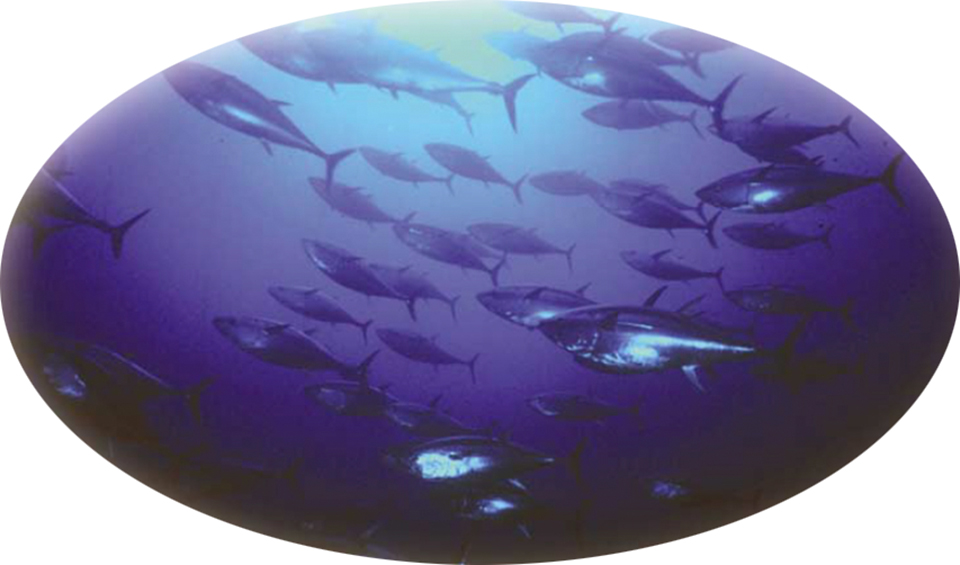
Health & Welfare
Scombrotoxins, part 1
Without proper control of seafood handling and processing, high amino acid content and bacterial activity can rapidly elevate concentrations of biogenic amines like scombrotoxins.
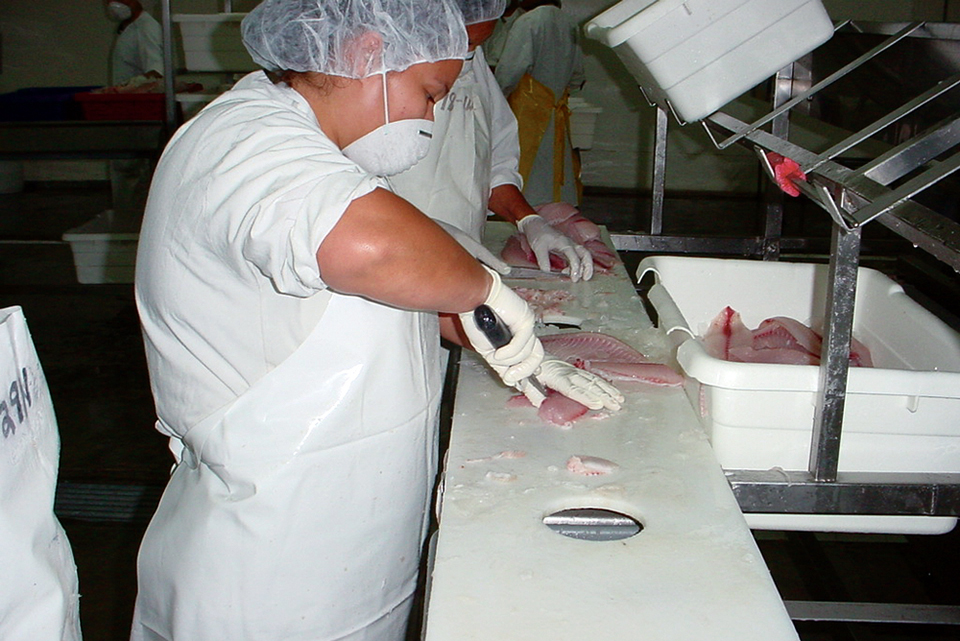
Health & Welfare
Scombrotoxins, part 3
While freezing, salting, smoking and irradiation can minimize growth biogenic amine formation, special care from harvest through consumption can prevent scombrotoxin poisoning.
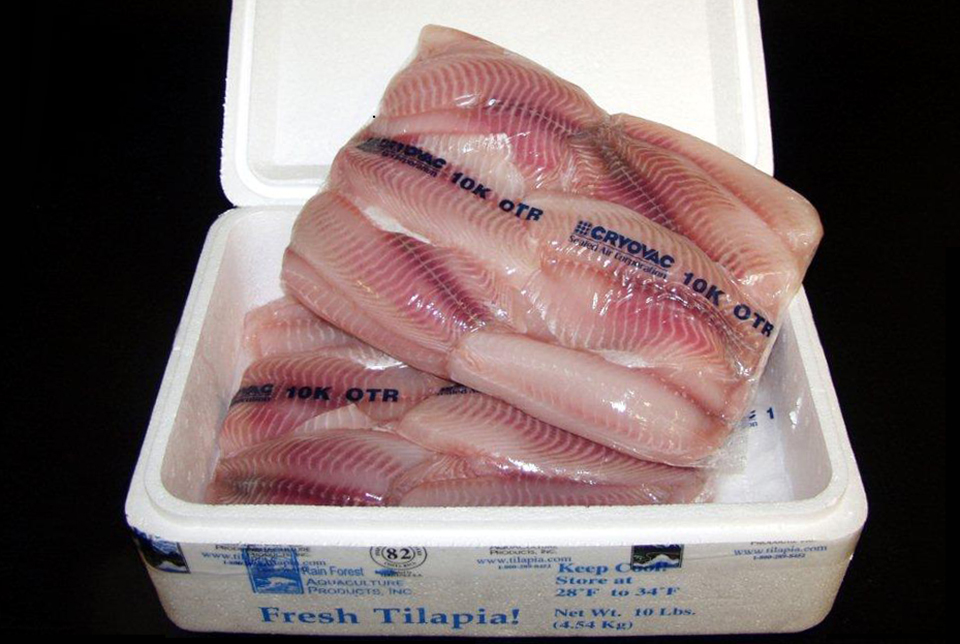
Intelligence
An examination of seafood packaging
Some substances can migrate from plastics and other seafood packaging materials into the product. Even if the substances are not harmful, they can affect the flavor and acceptability of the food.
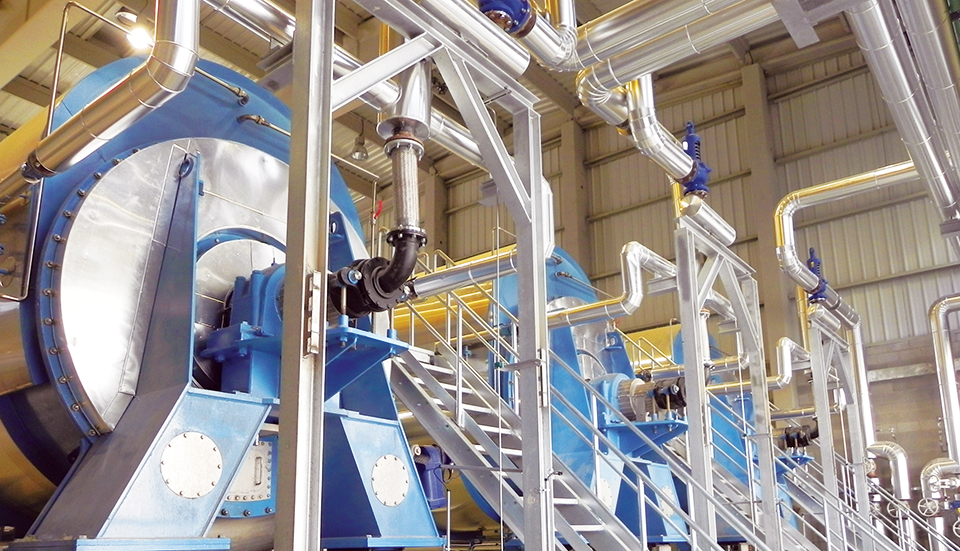
Aquafeeds
Animal byproduct concentrates useful tools in formulation
With the market volatility of fishmeal, as well as rising sustainability concerns, the aquaculture industry is seeking sources of protein, such as animal byproduct concentrates, to substitute for fishmeal.

